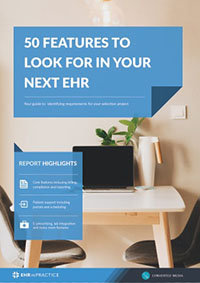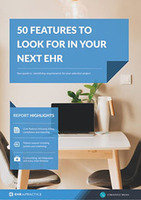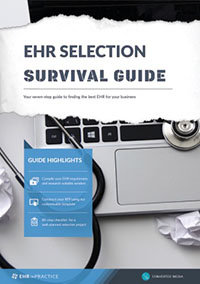Eight features to look for in a patient scheduling module
Patient scheduling is critical for operational efficiency, reducing missed visits and ensuring that patients are seen in a timely manner. There are several key features that you should look for when analyzing the quality of a patient scheduling module.
1. Secure access based on user privilege
The system should offer varying capabilities within the system based on the type of employee or clinician accessing the system. The patient scheduling module may be available to the operational staff, but they may not have access to patients’ entire medical information. This feature helps reduce likelihood of breaking any privacy and security measures.
2. Add/remove/edit visits
The patient scheduling module should have a one-click system to add, remove or edit a visit. The process of moving an appointment should be easy. There should not be any duplication of entering patient information when a visit is moved. A one-click feature to edit an appointment will reduce likelihood of human error.
3. Check-in
The receptionist should be able to easily ‘check-in’ a patient when they arrive for their appointment. There should be an indication patient check-in viewable to clinicians, so that there is no delay in patient care. By having a viewable check-in status, clinicians save time by not having to confer with the receptionist each time a new appointment is scheduled.
4. Automated reminder for insurance/payer type
The patient scheduling module should include an automated verification for payer source. This may appear when the patient checks-in for their visit. The module should provide a prompt for payment confirmation. It should also contain an option for editing payer source from the patient scheduling module, if applicable.
5. Color-coded appointment types
Depending on the practice setting, there may be different types of visits, and this should be reflected at a glance in color coded appointments. For example, a physical therapist may have evaluations coded in green and treatment visits coded in yellow. When the therapist views her calendar for the day, she will be able to quickly determine what type of visits she will perform.
6. Multi provider scheduling in one portal
A medical practice will likely have several providers within one office. It is important that the patient scheduling portal offers the receptionist access to scheduling all of the providers within one module. A patient may need to change which provider is seen based on available appointment times. This should be easily performed within the same module. The receptionist should not have to switch between screens to change provider.
7. Remote access
It would be beneficial to the providers, if they are granted remote access to their own patient portal schedules, so that they are able to edit appointments or availability as they need.
8. Patient scheduling access
Some practices may benefit from a patient portal that allows for self-scheduling of visits. This can increase patient’s involvement in their own medical care. Additionally, it may reduce the work of the front desk.
Free white paper

50 features to look for in your next EHR
A comprehensive guide to EHR features and how they can benefit your practice

Featured white papers
Related articles
-

5 key stakeholders in your EHR selection
Learn about the individuals that, when consulted early and often, can make your EHR selection pro...
-

5 important areas of EHR training during implementation
Successful EHR implementation is not possible without crucial EHR training
-

Top oncology EHRs to kickstart your selection shortlist
Learn about some of the leading oncology EHR systems on the market including CureMD, ARIA Oncolog...




